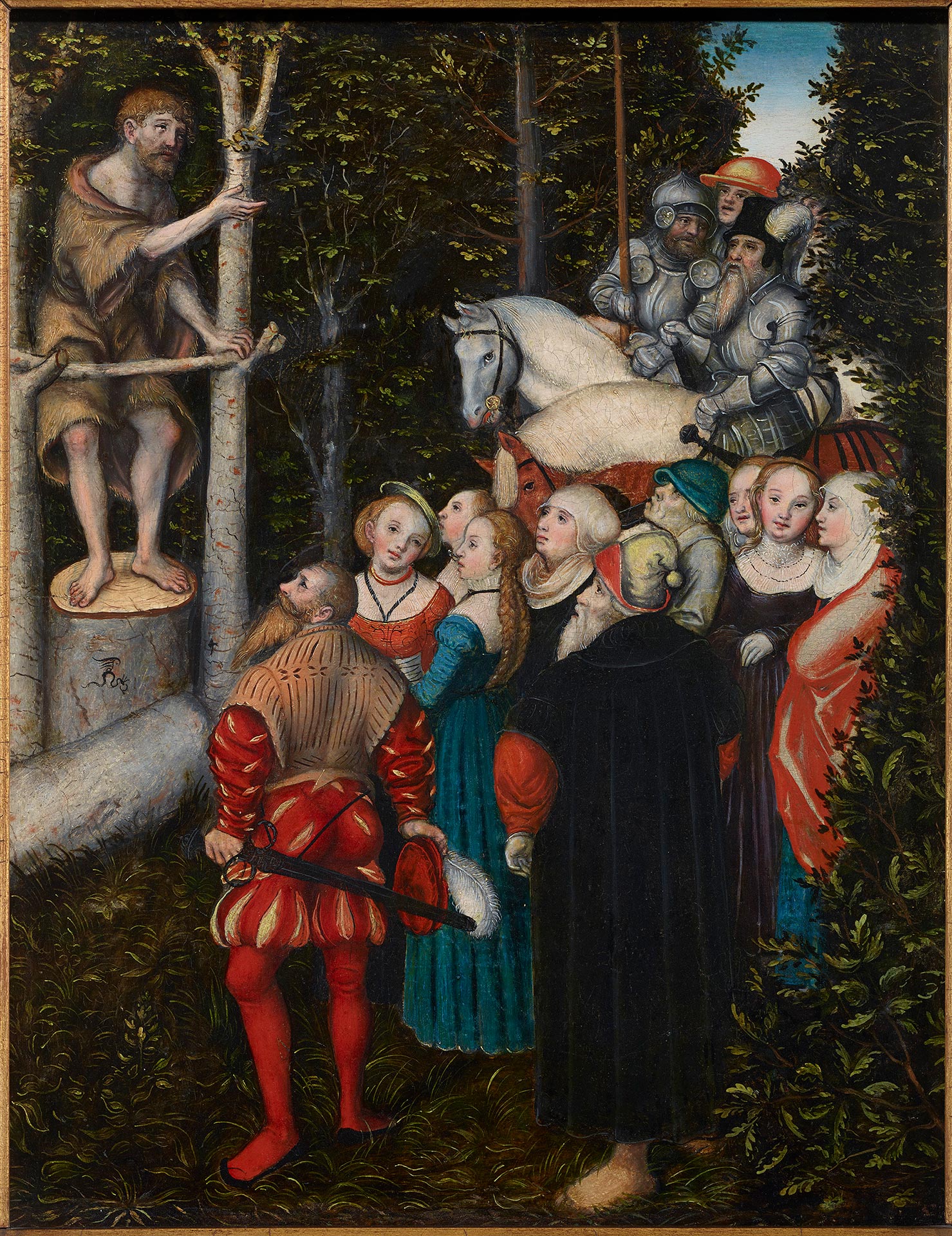
Lucas Cranach el viejo (Kronach, Alemania, 1472 – Weimar, Alemania, 1553)
The Sermon of St. John the Baptist
circa 1537/1540
WORK INFORMATION
Oil on panel, 47 x 38 cm
OTHER INFORMATION
Signed on the tree trunk where the Saint stands with the winged serpent (wings folded)
Nothing is known about the beginnings of this Franconian painter, who took the name of his hometown as a surname. He was in Vienna from 1501 to 1504, absorbing the influences of Danubian painters. In 1505 he settled in Wittenberg and entered the service of the Elector of Saxony, Frederick the Wise, who presented him with the coat of arms from which he took the winged serpent that served as his signature after 1508. When his elder son Hans died in 1537, he folded the monster's wings and continued to use the device as a workshop mark. The elector also gave Cranach permission to open an apothecary's shop and print Bibles. He sympathised with the reforms of Martin Luther, whom he portrayed, though he also worked for Bishop Albert of Brandenburg. After John Frederick of Saxony was defeated at Mühlberg in 1547, he joined the elector in exile at Weimar, where he died.
Until around 1530, Cranach produced a number of original works, most of which were engraved. Later, to satisfy the steadily growing demand for his pieces, he resorted to the constant repetition of certain successful themes—Adam and Eve, Venus, Lucretia, Judith, Judgment of Paris, Nymph of the Spring, etc.—based on earlier models, sometimes with slight variations, or to recycling old elements and motifs assembled and exchanged in different ways. He was able to turn out a staggering number of works with the help of his son and namesake, born in 1515, and several other workshop assistants whose names have been recorded. It seems obvious that, given the existence of this skilled team and the master's advanced age, Cranach's involvement was minimal after Hans's death.
The theme of this work does not appear among the approximately six hundred paintings catalogued in the seminal work by Friedländer and Rosenberg (1973, reprinted in 1978), even though it was made after 1537. Only a woodcut dated to 1516—copied from a lost original—depicts the same sermon, but the listeners present numerous variations. The rarity of this episode from the Gospels (Mt 3, Mk 1, Lk 3) in Cranach's output makes this a particularly fascinating panel.
The improvised stump-pulpit on which John is preaching, with a crosswise branch to keep him from falling forward, is quite remarkable. The ten listeners standing before him and the three mounted knights in the background form a kind of funnel that conveys a sense of depth. The dense trees and undergrowth fill the rest of the space, and their uniform green contrasts with the colourful figures of the men and women who are listening closely or lost in their own thoughts.
There are few perceptible similarities to other works by Cranach. Among them we might list the armour and horses of the knights, the leaves on the trees, and the garments of the standing listeners, despite a slight stiffness in the vertical draperies. The ornamental quality conferred by the composition and arrangement of the colours and the frailty of the figures, which show signs of weak brushwork in places, are characteristic of the works of the master and director of an extensive workshop. [José Manuel Cruz Valdovinos]

